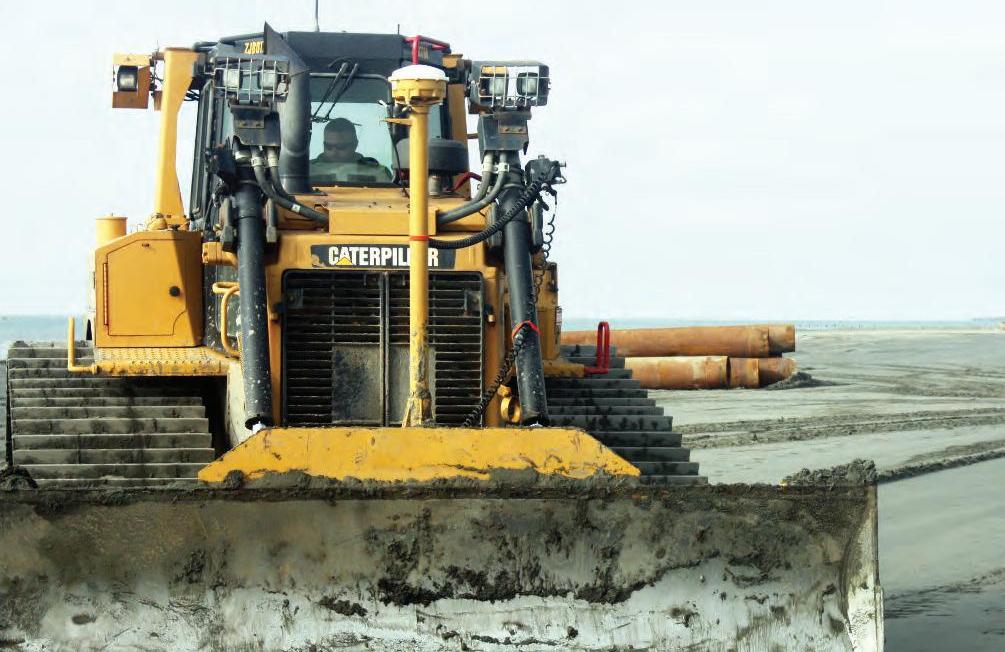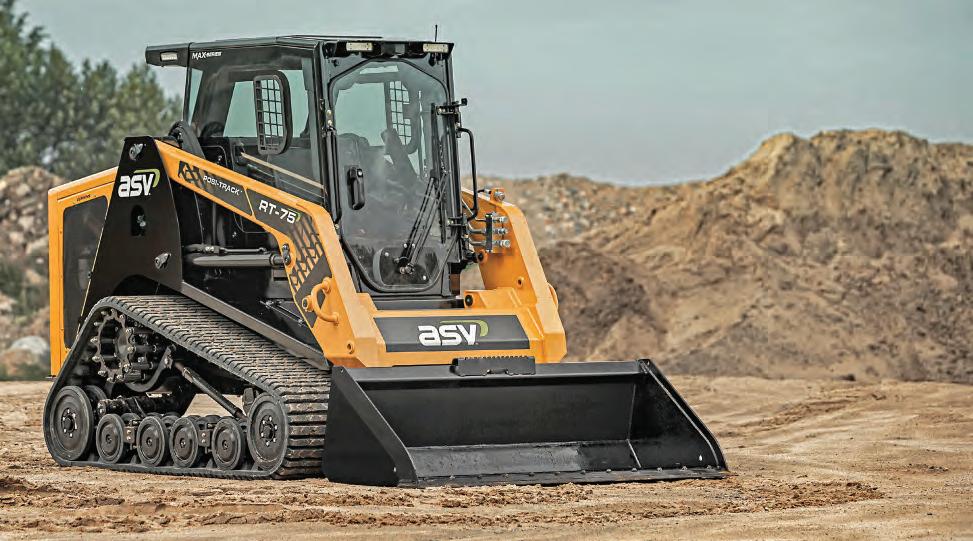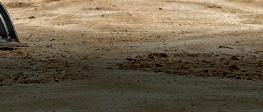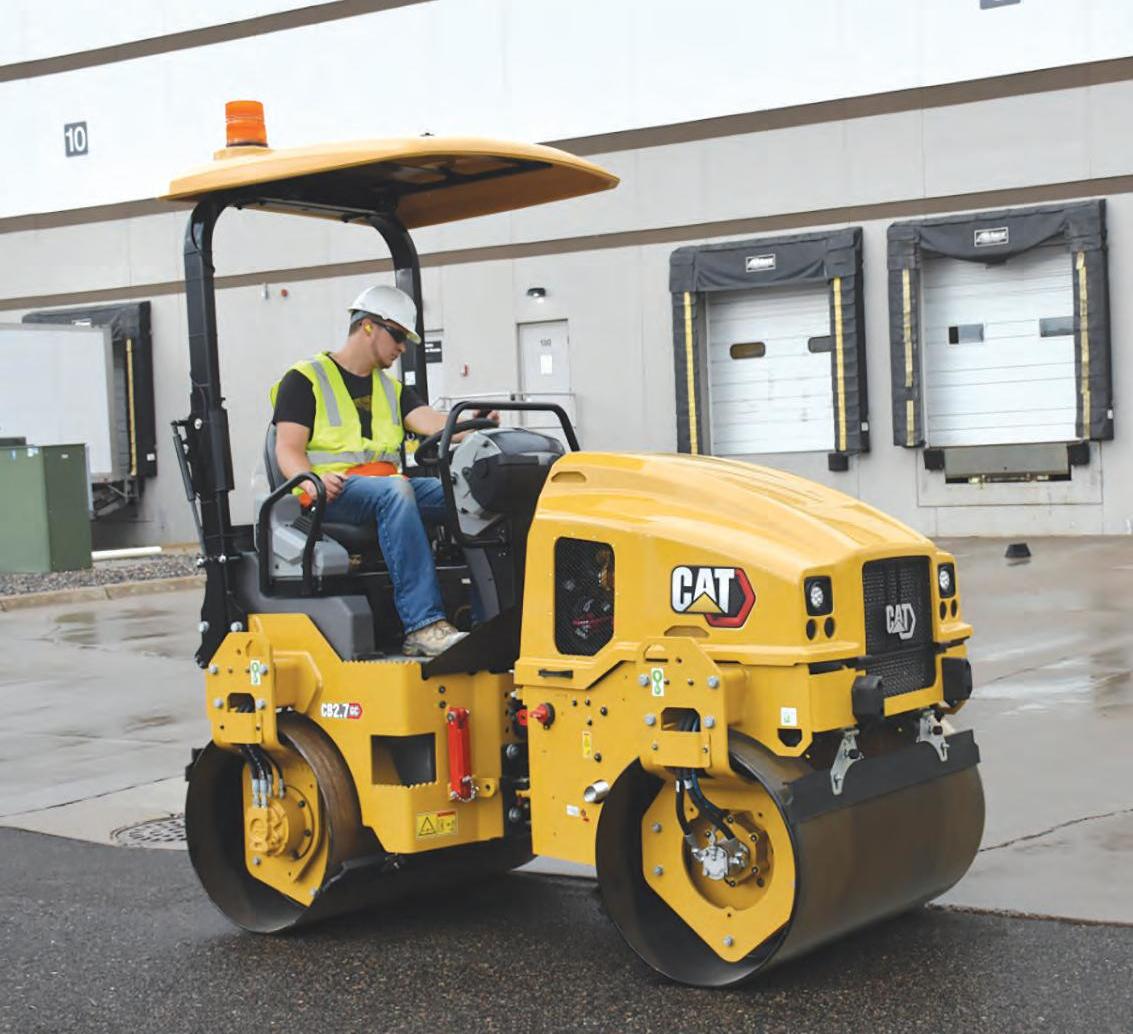
5 minute read
GULF RESTORATION PROJECT DUE TO BEGIN IN BARATARIA BAY
By Lori Tobias Nearly 11 years after the intertidal marsh platform that will support marsh plants and CEG CORRESPONDENT Deepwater Horizon Oil Rig support healthy wetland habitat, which can lessen the impact exploded in the Gulf of of future storms by dissipating wave energy. Mexico, the National Oceanic Atmospheric The project will use approximately 8.4 million cu. yds. of Administration (NOAA) is preparing to bid out the sediment dredged from the Mississippi River. A single conmarsh restoration project on Barataria Bay, La. struction phase will be used to maximize cost effectiveness, According to NOAA, the lead federal agency on the with an estimated construction duration of 26 months. Bids Barataria Bay project, the explosion killed 11 peo- are expected to be solicited in 2021. The total estimated cost ple, injured 17 others and emptied 134 million gal. is approximately $176 million, including previous design of oil into the Gulf of Mexico. It caused the deaths efforts. of 105,400 sea birds; 7,600 adult and 160,000 juve- To get the slurry from the Mississippi River, crews will nile sea turtles; and up to a 51-percent decrease in build a 13-mi. sediment conveyance pipeline, carrying the dolphins in Louisiana’s Barataria Bay. slurry from the river to the area where they will restore the
Now restoration is about to get under way, funded marsh. There they’ll use mechanical, bucket and hydraulic by the Deepwater Horizon Oil Spill Fund. At $20.8 dredges to restore the marsh, along with marsh buggy excabillion, it’s the largest environmental settlement in vators to build the containment dykes. the United States. “The marsh is basically either eroded or sunk to where it
“We plan to restore as much as 11,063 acres in the is an open water area,” Rogers said. “Instead of building one intertidal marsh of Barataria Basin,” said Donna huge marsh creation area, we’re creating smaller areas and Rogers, NOAA Restoration Center habitat specialist we’ll have water in between, basically making five areas and also the federal project manager. “The area instead of one huge and then a tidal pond. Also, we’ll have where the project is located, Barataria Basin, not water in between the marsh areas, trying to create marsh only suffered significant land loss, but also was where there is none now. We try to minimize impacts to surheavily damaged during the spill. Wetlands provide rounding marsh areas. We are very cognizant of making sure all kinds of resources for fisheries, wildlife and we don’t damage vegetation around the area. birds. We’re trying to restore a portion of the habitat NOAA scientists took into account that when they pump to support wildlife and fisheries. We want it to be as functional as possible as quickly as possible. Once the land settles, it will be intertidal, and we’ll be able to get the critters on to the marsh. Our goal is to create a functional marsh, getting it as close to what there was to start with.”
The project includes filling areas to create an the water and sediment slurry to the location, the water will dewater and the area they pump will sink. “We know how it will settle based on geological technical data,” Rogers said. “We want it to be about the level of the existing marsh in the area. We’ll be able to get the water onto the marsh and animals can use the marsh. Marsh vegetation will grow on it. We’re trying to restore the injuries. Louisiana has had extensive land loss since the 1930s, losing almost 1,900 square miles of coastal land. It’s due to a lot of different factors. The land is sinking; sea level is rising. When you dig canals, when you have storms and erosion of banks and other areas, you’ll also have fluid extraction which will also cause it. You get saltwater intrusion into freshwater marshes and that will kill vegetation. It’s a very bad situation. It’s kind of scary.” CEG

NOAA Fisheries/Gulf Coast Air and Weeks Marine Inc. photo
Aerial image, captured in 2014, of the future Upper Barataria Large Scale Marsh Creation project area location where more than 1,100 acres of marsh will be restored.
NOAA Fisheries/Gulf Coast Air and Weeks Marine Inc. photo
Example of a barge used for dredging and pumping sediment to marsh creation areas. This was used in the nearby 2014 Bayou Dupont marsh restoration project.









1809 Blue Clay Road Wilmington, NC 28405 (910) 782-2477
www.soundheavymachinery.com
WIN A 1-YEAR LEASE ON AN ALL-NEW MAX-SERIES™ LOADER
When you complete a walkaround of an ASV loader with us, you’ll have a chance to enter to win. Contact us today to schedule an appointment.
NO PURCHASE NECESSARY. The Chance to Win an ASV Max-Series Lease Sweepstakes is open to residents of the 50 U.S. & D.C. & Canada, excluding Quebec, who are the age of majority or older and who are owners or operators of businesses in the agricultural, construction and landscaping industries. Void where prohibited. Starts at 12:00:00 AM CT on 8/1/20 and ends at 11:59:59 PM CT on 5/31/21. Odds of winning depend on number of eligible entries received. For how to enter and a copy of the offi cial rules at www.asvi.com/winamax. Sponsor: ASV Holdings, Inc., 840 Lily Lane, Grand Rapids, MN, 55744 © 2020 ASV Holdings, Inc. For more information, visit ASVI.COM.
1809 Blue Clay Road Wilmington, NC 28405 (910) 782-2477
www.soundheavymachinery.com











